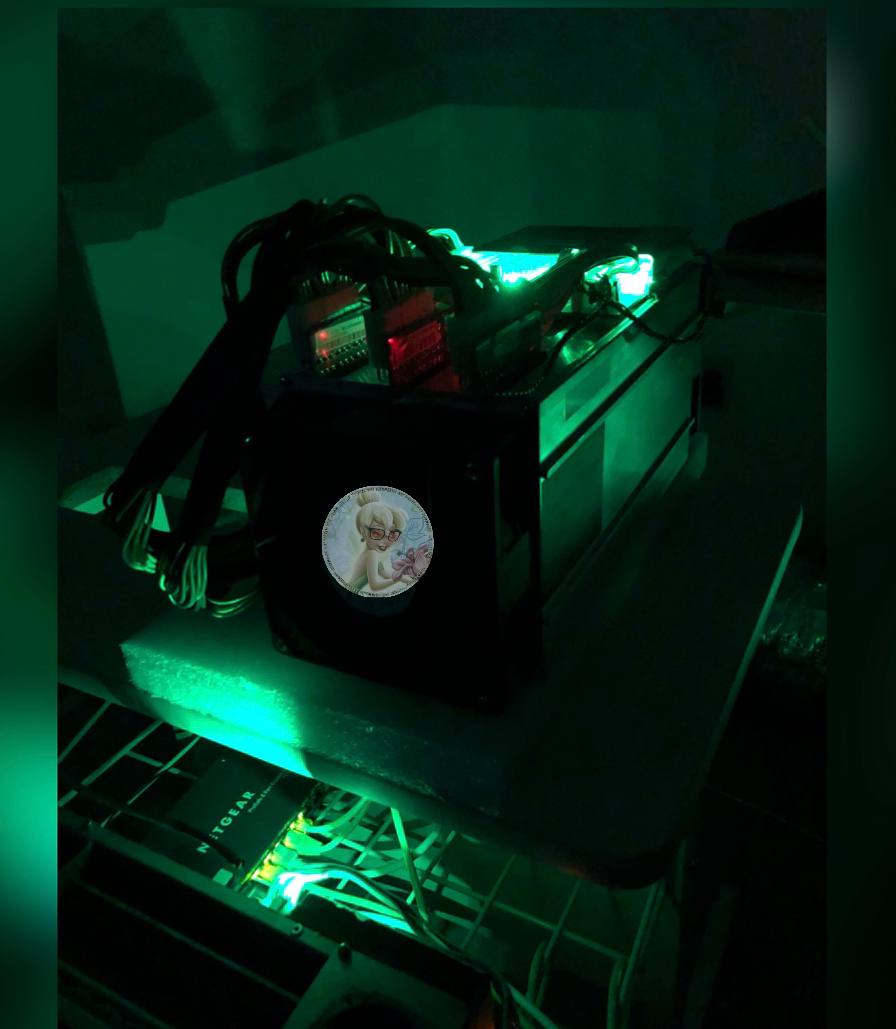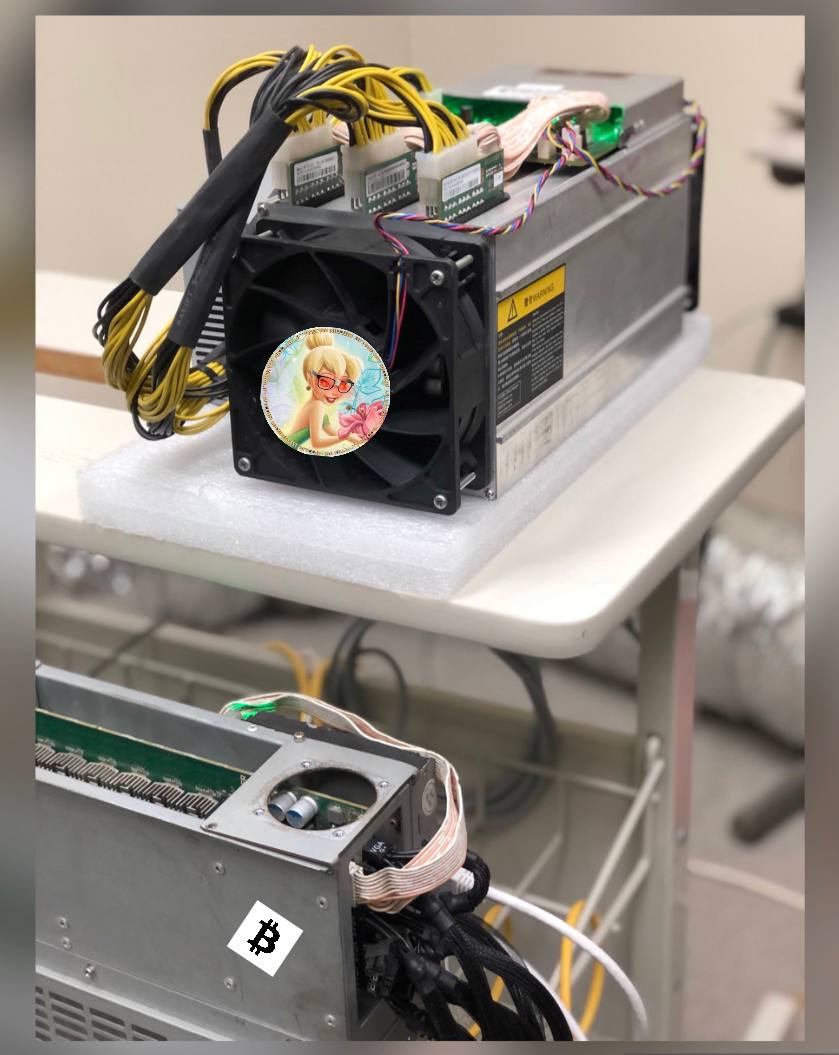Written by @JonPDiGiacomo and edited by @bitcoinbabybee . If you liked this translation, creach out to Tink for a project or leave him a tip on one of two ways: paynym.is/+Tink or strike.me/bitcoinbabybee. If you want to know more, listen in @ungovernablemf this month, #PlebMinerMonth.
The original Bitcoin miner, Satoshi Nakamoto mined the Genesis Block with a reward of 50 Bitcoin, Bitcoin that can’t be spent as the Genesis Block is hardcoded into new nodes as the root of the blockchain. The signature of his mining was later analyzed by Sergio Lerner, he dubbed Satoshi’s miner as Patoshi and its signature as the “Patoshi Pattern”. The technique Lerner used determined Patoshi hashed a different set range of nonces. This behavior created a unique saw pattern in nonce data analysis. It’s estimated that he had up to 48 CPUs mining with another controlling the operation and/or on standby to protect against a 51% attack. Satoshi mined solo until he invited Hal Finney and Martti Malmi to join the network. Famously on January 10, 2009, at 10:33 PM, Hal Finney was “Runnin’ Bitcoin”, soon others joined in.
It’s fascinating to look back at those first blocks; difficulty of 1, block reward 50, the delicate balance of the 10-minute mark not quite there yet. In reviewing this short Bitcoin history lesson, we bring light to the fact that Satoshi wasn’t running a giant mining operation with a cool name, a board with multiple investors, and billions in capital expenditures. He was possibly a guy in his basement or garage that he considered his lab. He shared the code with associates he knew online. Their goal was to discover blocks and secure the network. He mined because he was passionate about the innovation that he built. He was the original miner, he was a Pleb Miner. Sometime in May of 2010, Satoshi turned off the Patoshi miner, confident that he had passed the torch onto the next generation of miners.

An all-time high block-height later, Bitcoin is still “runnin” Much of the hashrate on the network is coordinated through large mining pools, like F2, Antpool, and Foundry’s pool. Companies like Core Scientific and Marathon control a commanding amount of the Bitcoin network’s hashrate. But 30% of all blocks ever discovered are labeled as found by ‘Unknown’ and 20% of all blocks categorized as ‘other’. There’s something beautifully mysterious about the fact that almost 364,000 blocks, approximately half of all blocks discovered throughout the time-chain, have been discovered by “anonymous” miners. That fact conveys the sentiment that not all the hashrate is controlled by pools or large mining operations, and that individuals have had an enormous contribution to the network. Individuals like Pleb Miners.
Everyone has their own definition of a Bitcoin Pleb. It’s not defined by the amount of time you’ve been in Bitcoin, the number of sats in your stack, or how many followers you have on Twitter. The same can be said of a Pleb Miner. Pleb Miner is not defined by your total hashrate, how many watts are required to run your operations or the complexity of your setup. The title is not something that someone bestows upon you or issues you a rite of passage. So, then the ultimate question then begs us for an answer. Who and what is a Pleb Miner? A Pleb Miner is simply a Bitcoin Pleb who mines Bitcoin. A Pleb Miner is dedicated to the Bitcoin network, contributing their hash not only for the chance at finding the next block and receiving the block subsidy and transaction fees or helping his pool find the next block for a share of the reward but hashing because they know in their hearts that securing this network is a moral imperative. They mine because Bitcoin is a chance for humanity to restore sovereignty to the individual, to the family. They heed the clarion call that sound money leads to freedom. They mine knowing that for Bitcoin to be decentralized, they must be the ones to do it. Their motivations aren’t to gain more fiat currency, their motivations are to stack more sats and in doing so, they innovate, collaborate with other Plebs, and share their mistakes as well as their triumphs. They spend time on chats offering advice to the new Pleb Miners as well as learning even from the newest in our ranks, they make guides, videos, and how-to’s, they share pictures of their setups, not only to share in their innovations and to be critiqued but because they are proud of their work, as they should be. Proof of work is not just a motto for the Pleb Miner, it’s a way of life.
Pleb Miners come from all backgrounds, locales, and experiences. They bring various skillsets and craft. To be a successful Pleb Miner, you quickly learn many trades. Mining encompasses several science and mathematical concepts: basic physics, electricity, thermodynamics, acoustics, and cryptography. Pleb Miners quickly become proficient if not master skilled trades: electrician, IT/Telecom, HVAC, plumbing, welding, carpentry, and more. The Pleb Miner knows that mining is much more than plugging in machines.
This month on The BitBuyBit Pod and Ungovernable Misfits is dedicated to you, The Pleb Miner. The stalwart that defends the network, the unsung anti-heroes of Bitcoin. No influencers, no thinkbois, just Plebs plugging in machines and hashing. The same way Satoshi and Hal did, thousands of blocks ago. In this way, we answer the question of who and what is a Pleb Miner; a Pleb Miner is you and you are all Satoshi.
